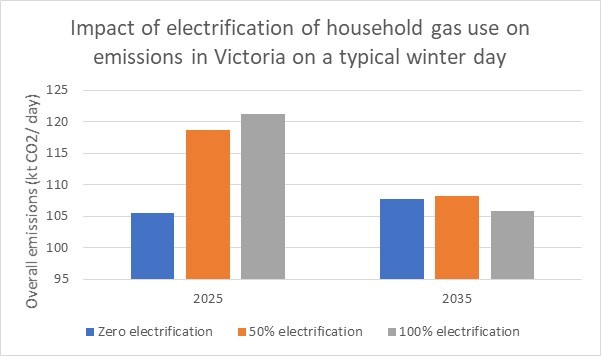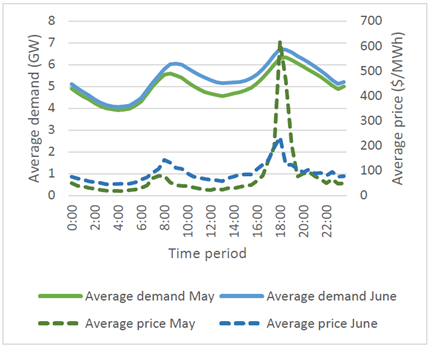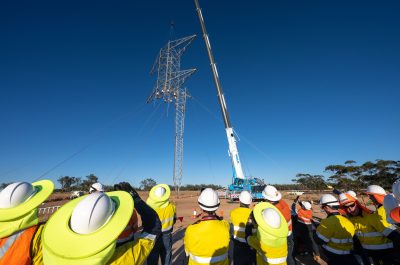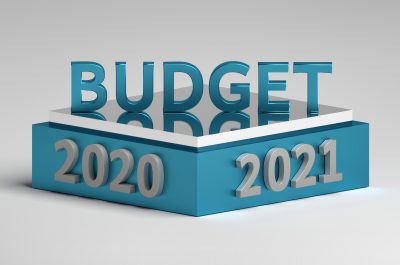Banning new gas connections cold comfort for customers and climate
The Victorian government is considering the future of gas through its consultation on a Natural Gas Substitution Roadmap[i].
Many local councils and community groups have made submissions calling to electrify households and to ban new gas connections. The main arguments they cite are to reduce emissions and save money. Similarly, the ACT government is considering legislation to prevent new gas mains network connections to future residential developments[ii].
The UK was also considering banning gas boilers in new homes from 2025 and their purchase overall by 2035 but is now considering pushing this back to 2040 citing concerns over the cost for heat pump replacements[iii]. So does banning new gas connections actually make sense?
Customer choice
Gas is a fuel of choice. Customers continue to choose gas for heating and cooking and about 100,000 new homes are connected to the gas networks in Australia each year. Each household contains 2.6 people[iv], so that means that every year, an extra 260,000 people get the benefits of gas.
Banning gas connections removes this choice from customers.
But gas produces emissions
We all know that burning fossil fuels produces greenhouse gas emissions and that we need to stop doing so to reduce the impacts of global warming.
As it stands, emission intensity from electricity in Victoria is about four to five times that of burning gas directly. Many argue that the energy efficiency of electrical appliances addresses this difference in intensity and that it can even benefit electrical appliances.
However, systems wide modelling[v] from Future Fuels CRC shows that electrifying the gas load with efficient heat pumps for a typical winter day in 2025 increases the overall emissions. The overall emissions include those from electricity generation and direct consumption of gas. This increase is driven by more emissions intensive generation being required to replace the use of gas for space heating, as this generally occurs in the early morning or the evenings when the contribution from solar PV is minimal. The overall emissions are similar for direct gas use or electrification in 2035 when allowing for the closure of Yallourn power station and Victoria reaching its 50 per cent renewable electricity target in 2030.
Figure 1: Impact on overall emissions through electrification of residential gas demand in Victoria (Source FFCRC, ENA Analysis).
What this implies is that replacing gas use in households with electricity can lead to overall increased emission. So, placing a ban on new gas connections, and forcing those homes to be fully electrified, would undermine the objective of reducing emissions.
Two is better than one
While there are more than five million homes with a gas connection in Australia, there are also many homes without gas. So, no policy intervention is needed for customers who want to build and live in fully electrified homes.
The impact of heating is also evident on the demand and wholesale price of electricity. AEMO data shows that average wholesale electricity prices during the morning and evening peaks in winter are higher compared with the rest of the day. These peaks coincide with the daily gas consumption for heating.
Figure 2: Victorian electricity price and demand (Source: AEMO data).
The gas network is already designed to meet these demands. Switching this gas load to the electricity network increases the magnitude of the electricity peaks and consequently the wholesale price of electricity.
Introducing a policy that forces this to happen results in increased bills for all customers as wholesale price increases drive up retail prices. This is before any strengthening of the electricity system is required to meet that extra demand, which will once again increase bills.
But electricity is switching to renewables
There are many different sources of energy used for electricity generation. Some are dispatchable and emit emissions such as coal and gas, while others are variable and do not produce emissions, such as wind and solar. As the electricity grid further decarbonises, it will become a cleaner option compared with the emissions from continued use of natural gas. But that requires either renewable generation to be producing at the same time as the heat demand, or extensive energy storage through systems batteries, pumped storage and other means. Victoria reaching a fully renewable electricity sector will take decades of focused investment and construction.
Over the same time, the energy industry is committing that natural gas will be replaced by renewable gas in the form of hydrogen or biomethane. For example, Australian Gas Networks[vi] is targeting a 10 per cent renewable gas by volume by 2030 and aiming to fully decarbonise its distribution networks[vii] by 2040 as a stretch target and no later than 2050. This is consistent with Victoria’s target of net zero by 2050 and with Australia’s commitment under the Paris agreement on climate change.
An important part of decarbonising gas networks is to demonstrate 100 per cent renewable gas options to new homes and new residential estates. Banning new gas connections jeopordises that pathway.
Making decisions about the energy sector needs to take a balanced approach and broad advice. Simplified arguments about costs and emission savings often ignore systems impacts and quite often can have unintended consequences.
The future of gas in Victoria is one of these important decisions. Those who advocate closing off new gas connections cite greenhouse gas reductions as one of their justifications. However, an informed consideration of the facts and the nature of the energy sector – especially in cold-climate regions reliant on gas for winter heating, demonstrates the flaws in this simplistic view.
[i] https://engage.vic.gov.au/help-us-build-victorias-gas-substitution-roadmap
[ii] Parliamentary & governing agreement – 10th legislative assembly Australian Capital Territory.
[iii] https://www.dailyrecord.co.uk/lifestyle/money/gas-boiler-ban-myths-busted-24786208, 18 August 2021
[iv] https://aifs.gov.au/facts-and-figures/population-and-households
[v] Modeling covered in an earlier Energy Insider: https://www.energynetworks.com.au/news/energy-insider/2021-energy-insider/what-to-do-when-electrification-will-increase-emissions/ and the research report available here: https://www.futurefuelscrc.com/project/regional-case-studies-on-gas-and-electricity-system-integration-rp1-1-02/
[vi] https://www.agig.com.au/renewable-gas
[vii] AGN covers around 2/3 of Victoria’s gas customers.




